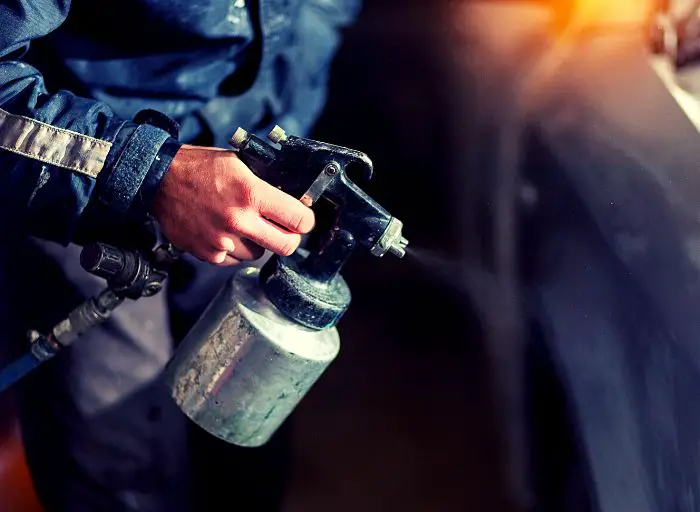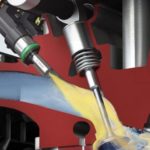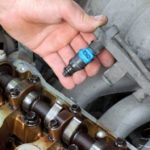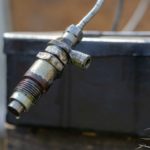
You might be interested in a new coat of paint if your car needs a new look or if the paint job is worn. A professional paint job, however, is very pricey. An excellent substitute is to spray paint your vehicle. So, how many cans of spray paint to paint a car?
For 2-3 coats of new paint, you’ll need about 8-12 500ml spray cans, depending on the paint brand and the car’s size.
Here is a quick table summary:
| Apply for | Number of spray paint cans |
|---|---|
| A normal size car | 8-12 500ml cans |
| A car hood | 1-2 500ml cans |
| A car bumper | 1 500 ml can |
| A car roof | 1-4 500 ml cans |
| Car rims | 1-2 500ml cans |
Table of Contents
Is It a Good Idea to Spray Paint a Car?
Any DIYer will answer without hesitation that rattle cans are perfect for repainting the car.
Spray paint is simpler and more economical to use at home than conventional techniques. Additionally, this method offers many color options that will suit your interests. Not to mention, the completed layer dries significantly faster, making the cleanup process easier.
You must acquire the necessary knowledge and abilities to conduct. Otherwise, the final product can be a disaster rather than producing an even, glossy layer.
As a result, I want to warn you that:
Do not confuse house paint with vehicle paint. Their quality and functionality are very different. The outcomes could be pretty bad if you paint your car with the wrong paint.
How Many Cans of Spray Paint to Paint a Car?
Think first about the spray company, which provides a distinct thick mixture. Next, choose the number of coat layers you plan to wear.
A minimum of 2-3 coats of paint are recommended for the best results. It is furthermore, adding four more cans for your bumper. By that, you require 8-12 500ml spray cans.
Those criteria can vary greatly based on the type of vehicle. Therefore, it would be helpful to think about what best matches your car, such as its model, color, or exposure to the sun.
Let’s say you can’t afford to buy all those cans. Feel free to reduce it to 10. But keep in mind that you get what you pay for. A sufficient number of coats will help the paint adhere more firmly and last longer.
How Much Does It Cost to Spray Paint a Car?
Standard spray paint won’t work well here. Any results it produces will only last a limited time, and you may also have to deal with flakiness, which might expose metal and eventually cause rust. Therefore, it is advised to use high-quality automotive spray paint, which runs between $10 and $20 a can. Here is a ballpark figure:
- Two to three cans of clear coat and four cans of spray primer. You’ll spend about $250 on spray paint overall.
- A drop cloth, a mask, safety glasses, film, masking tape, and a painter’s mask. About $300 will be spent on these things.
- If you want the paint to stick and keep from flaking, you’ll need tools to sand the car down to the original primer and bare metal. Repairing dents and performing other minor auto maintenance may be necessary. They contain body fillers, an orbital sander, an air compressor, solvents, and sandpaper. These things could set you back $300 or more.
The entire cost to spray paint a car at home is around $900 (minimal).
How To Spray Paint A Car Yourself?
Here are eight specific procedures for spray painting an automobile with rattle cans.
Preparation
- Safety equipment (Face masks, eyewear, and dedicated strap suits)
- An orbital sander
- Rubbing compound
- Sandpaper (120 to 1500 grit)
- Primer
- Masking tape
- Lacquer thinner (also used to clean the catalytic converter)
- Cleat, coat, body filler, rust-oleum enamel, mineral spirit, acetone, tack cloth
- Spray paints of your choice
Get rid of the present paint
Before beginning this task, remember to wear safety equipment like glasses and a mask.
Once you see the bare metal, start vigorously sanding off the paint. The best advice is to sand down all paint in a circle immediately.
Next, use 180-grit sandpaper to remove any damaged surfaces like corrosion. Use 400 or 600-grit paper after that to make the paint surface accessible.
Rebuild the dingy area
Apply the body filler and hardener you’ve prepared to the dented area. Never stir the liquid; if you do, a bubbling hole will appear on the surface.
Before sanding it down, waiting until the mixture has dried would be better.
Clear the area
To clean all the painted surfaces, use mineral spirit. The oil residue will be detached at this crucial stage for improved performance.
Cover the bare spot with tape

Using masking tape and masking film, cover the unpainted area. For instance, the window trip and any mirrors or grills.
Mist the primer
It’s time to start painting now. First, apply three coats of primer. Take a 15-minute break while you wait for each layer to dry. After that, wait for the primer to cure for another 24 hours.
Then, using 1200 grit sandpaper, use the sand to separate the primer.
Utilize the paint
Please carefully read the instructions before using anything. To raise the pressure within, gently shake the rattle cans.
Next, tilt it to the side, make any necessary adjustments to the paint gun, and start evenly side-to-side spraying.
The initial two layers are typically painted in a few hours. Then, continue sanding while getting ready to apply the final coat until they have dry.
Put on the outer clear coat
Spray the last coat of lacquer next. You can now remove the masking tape and hold off removing it until the final coat is fully dry.
Surface polishing
Instead, use rubbing alcohol or rubbing compound to polish the painted surface. Don’t forget to rub in circular motions.
How Do You Get a Good Spray Can Paint Job?
When spray-painting your car, take your time. The effort you put in, and the level of pride in your job will determine how well the project turns out.
Make sure to focus mainly on the initial stages of the procedure. Your paintwork will appear terrific if your priming, sanding, and hole-filling are top-notch.
How Many Cans of Spray Paint to Paint a Hood?
You can anticipate using 1-2 x 500ml cans to complete the hood of your car. Car hood sizes vary. The hood should be primed first to prepare it for spray painting, and then a clear coat should be applied to protect it from harm and give it a great finish.
Spray painting can be difficult where the hood’s lip bends downward on the side and in the front, so take extra care there. Also, while trying to coat the lip, you must be careful not to apply it too thickly to another hood area.
How Many Cans of Spray Paint to Paint a Car Bumper?

Spray paint should be used sparingly on car bumpers; one 500 ml can often is sufficient for both bumpers. The contour of the bumper will determine how difficult it will be to spray because some bumpers are fairly uniform and simple to spray just flatly.
Other bumpers have cutouts, and spraying paint correctly can be more challenging. It is preferable to remove it from the vehicle and spray paint it somewhere if you have any doubts about the job. This will give you more space and angle alternatives.
How Many Spray Cans to Paint Car Roof?
The size of the cans varies so that the roof can hold anywhere from 1 to 4 x 500 ml cans. Pickup trucks often have 2 seats and a small roof, requiring very little spray paint.
In contrast, a van’s roof requires four spray paint cans due to the panel size. Even while the vehicle’s roof could be the most challenging section to access, the paint job will likely be easier than other portions because it is extremely consistent unless your car has a sunroof. To protect the aerial from paint, be sure to cover it.
How Many Cans of Spray Paint to Paint Rims?
One of the simplest items to spray paint is a set of four automobile wheel rims, which require 1-2 500ml spray paint cans.
Simply take off the rim and spray it in a place with good ventilation. However, in general, it’s a short process. They can have some odd shapes, which can make it more challenging. Within 10 to 20 minutes, you should be able to spray all four wheels with one coat.
To prevent the paint from running, let them completely dry before reattaching them to the wheel, ideally for 24 hours.
How Long Will It Take to Spray Painting a Car?
The longest step is getting the car ready for painting. It takes 3–4 days to sand, remove removable components, fix dents, and prime the surface.
The process of painting is the fastest. However, the drying times for various layers will vary. For instance, an oil-based primer can take up to 12 hours to dry. This will depend on the room’s kind, temperature, and humidity. If you are not using an oil-based primer, you should typically wait 3–4 hours before applying the color coat.
Depending on the spray paint used, the color coatings can dry in 30 minutes or even up to 24 hours. Before putting on the clear coat, a few touch-ups will need to be made.
Completing a spray paint job can take a few days to two weeks.
Check out this video for repainting a car with Rust-Oleum!
Frequently Asked Questions
How many cans of spray paint to paint a small car?
The number of cans required depends on factors like car size, number of panels, and paint coverage. You may need approximately 3-5 cans of spray paint for a small car.
How many quarts to paint a car?
If you prefer using quart-sized cans of paint, you’ll typically need around 2-3 quarts for a complete car paint job, considering multiple coats.
How many cans of spray paint to paint 4 wheels?
For painting four wheels, you generally require 1-2 cans of spray paint, depending on the size and desired coverage.
How many cans of spray paint for 4 rims?
Similar to painting wheels, you’ll typically need 1-2 cans of spray paint to paint four rims, considering multiple coats.
Can I use regular spray paint instead of automotive paint?
It is recommended to use automotive spray paint specifically formulated for cars. Regular spray paint may not withstand harsh conditions and could lead to poor adhesion and durability.
Is it necessary to sand the entire car before painting?
Sanding the car’s surface helps in creating a smooth and clean surface for better paint adhesion. It is generally necessary to sand the entire car or the specific areas where the paint will be applied.
How can I avoid paint runs and drips during application?
To avoid paint runs and drips, ensure that you apply thin, even coats of paint, maintaining the recommended distance between the can and the surface. Avoid spraying too heavily in one area and apply multiple light coats if needed.
Should I use a clear coat after spray painting my car?
Yes, using a clear coat after spray painting your car is highly recommended. Clear coats provide an additional layer of protection, enhance the shine, and improve the paint job’s longevity.
How long does a spray-painted car finish last?
The durability of a spray-painted car finish depends on various factors like paint quality, application technique, weather conditions, and maintenance. A spray-painted car finish can last several years with proper preparation and care.
Final Words
Spraying your car will probably be your best bet if you’re seeking a quick and simple solution to change the color.
However, you might consider other options if you want a more polished appearance or intend to keep your car long.
Are you planning to paint your own car, then? Purchase spray paint right away to begin your DIY projects.
Further Reading:
How to Paint a Car with a Spray Can
Hi everyone, My name is Ollie Barker.
As a seasoned auto expert I have 25 years of experience working in repair and detailing shops. I love to share my tips & tricks to all car lovers, so that’s why I’m here at Automotive Gearz publishing my content, sharing my passion. Also, I’ve been giving my recommendations on which products are the best to have on the market. I always thought it was hard to pick the right part, so hopefully I can make that a bit easier for you.
Hope you enjoy your time on my little blog!







